July 22: "Had an exciting sail in Queen Charlotte Strait in some 20+ kt winds with a double-reefed main and furled jib against some steep seas again, it was short but probably the most exciting sailing of this trip. Both me and my Dad donned on some harnesses for safety, and I think at the end my Dad was ready to go back to Victoria, but this short leg was a confidence booster."
This is one of many adventures from Dominik and his father’s attempt to sail from Victoria BC to Alaska and back again in 2010.
Each year, hundreds of West Coast boaters set out on adventurous journeys northward into Alaska through the inside passage. Weeks are spent preparing and provisioning the vessel and carefully planning the journey. Some of these journeys are documented in blogs, such as Dominik’s blog on their 2010 voyage on the Corsair. Another adventurous duo, Mike and Donna Ostler from Salcha, Alaska, bought one-way tickets to Seattle, WA, in the spring of 2013 with the only plan to buy a boat and sail it back to Alaska. In their words it was the year to “take a running leap and just jump in with both feet”. Their adventures are documented in sailblogs.
In May of 2009 and 2010, Smithsonian Environmental Research Center (SERC) researchers Drs. Gail Ashton, Ian Davidson, and Greg Ruiz traveled to Ketchikan, Alaska, to interview long distance boaters to learn of their voyage and maintenance patterns and survey their vessels’ hulls for marine biota. Their goal was to understand what role long distance recreational boaters may have in the inadvertent spread of introduced species. Ketchikan was selected because it is a popular harbor and considered the gateway to Alaska for those traveling north by sea. The results of this research are outlined in their 2014 publication in Estuaries and Coasts.
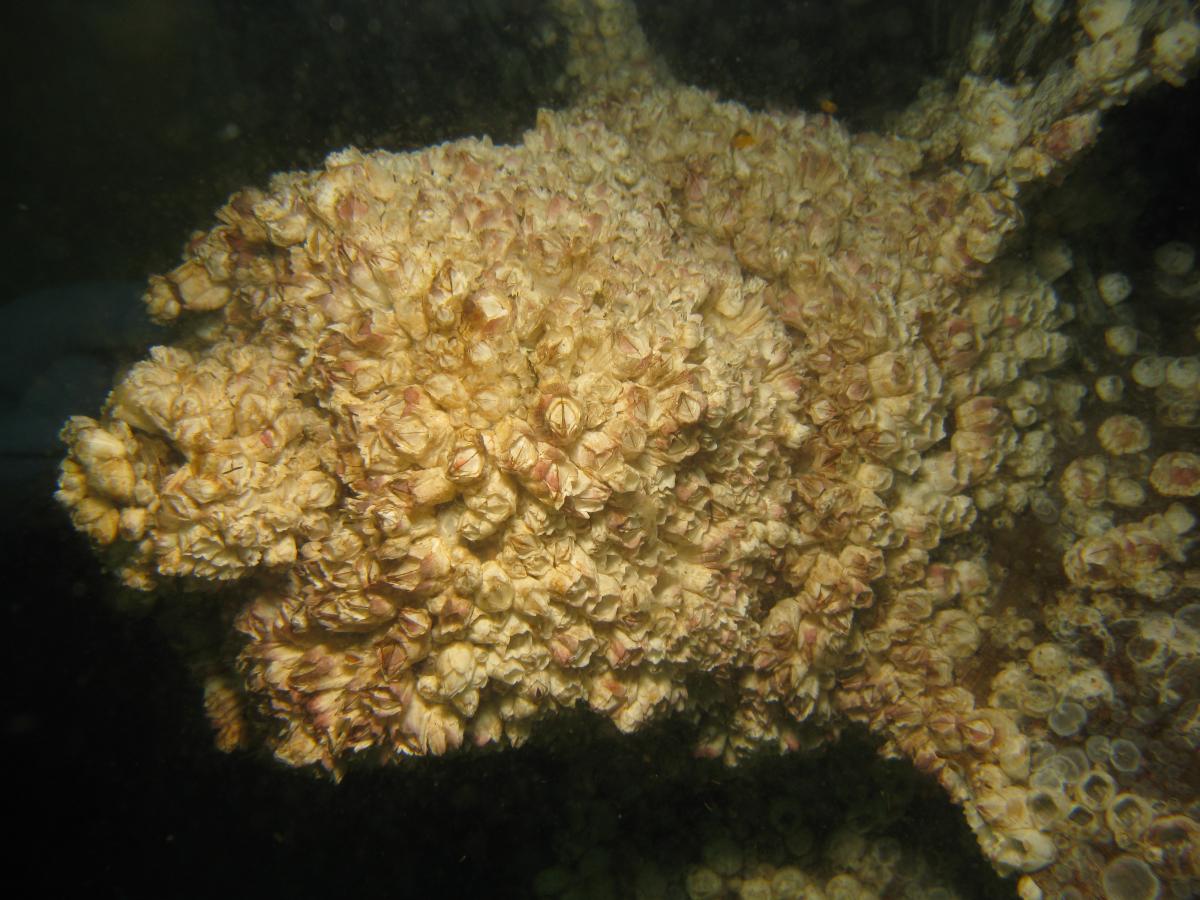
From past research, we know that there are many fewer introduced marine species at high latitudes compared to low latitudes. For example, in 2011 there were records of 257 introduced marine species in California and only ten known in Alaska. But all ten of the Alaskan invaders were discovered south of Alaska first, indicating that the spread of introduced species from an invaded region to the south is likely. We also know that hull fouling is responsible for the initial invasion of many established nonnative species along the US West Coast. Small recreational vessels can have hulls and submerged surfaces (e.g. rudders, propellers, and keels) fouled with a diversity of marine plants and animals that can be transported during these long distance voyages. Indeed, small boats may be as important in the spread of nonnative species as commercial vessels because of the varied maintenance routines, the tendency for longer port durations, and stays in a greater number of harbors, including small harbors not visited by larger commercial vessels. So, the way Dominik and his father, Mike and Donna, and many boaters like them treated their boat hulls prior to their voyages can be very important for understanding the spread of invasive species. In these two cases, we do not know what hull maintenance was done prior to these voyages; however, we do know that Mike and Donna hauled their boat in Ketchikan for repairs and had the hull repainted.
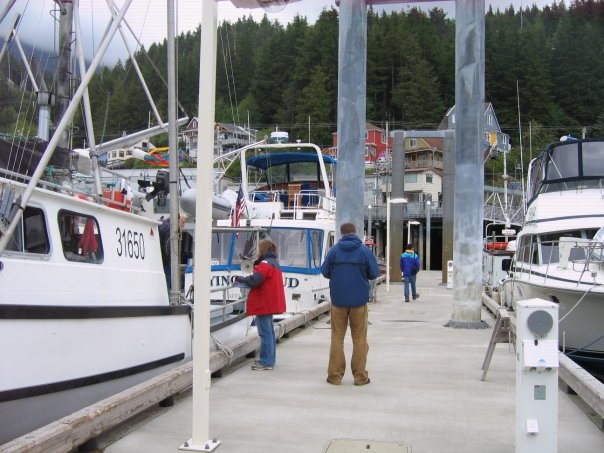
Assessing the risk that recreational vessels may pose in terms of the spread of introduced species was a three step process. The first step was to determine how many recreational vessels (non-commercial vessels, including sailboats, powerboats, and fishing vessels) arrived to Alaska from out of state. This information, which included the timing of arrivals and the source ports for incoming traffic, provided the magnitude of vessel flux (traffic) into the region. The next step was to gather information on the hull husbandry practices commonly used by these boaters. This included information on the application of antifouling paints (type and application frequency) and how often the hull was cleaned. This information was gathered through boater interviews. The final step was to look at the hulls of some of these vessels and assess the amount of fouling on each. A three person dive team conducted surveys on 50 vessels during May 2009 and 2010. With these three pieces of the puzzle, researchers started to get a picture of the role recreational vessels have in the spread of nonnative species to Ketchikan.
In 2009, at least 678 recreational vessels arrived to Ketchikan from out of state. As you might suspect most arrived between April and October before the onset of winter weather. Most of these vessels (95%) arrived from the south, mainly Washington State. The skippers from 53 vessels told us how they managed the hull of their boat prior to the voyage. Ninety percent of participants said that their boats had either been painted (40%) or cleaned (50%) within two months of their voyage. The paint on the boats that were cleaned rather than repainted was older than two months, and in some cases older than two years. The remaining boats were not cleaned before the voyage and their paint was over a year old. Since a dirty hull would slow the boat, diminish its maneuverability, and increase fuel consumption, it isn’t surprising that most people embarking on a long journey took care to clean or paint their boat as part of their preparation.
 |
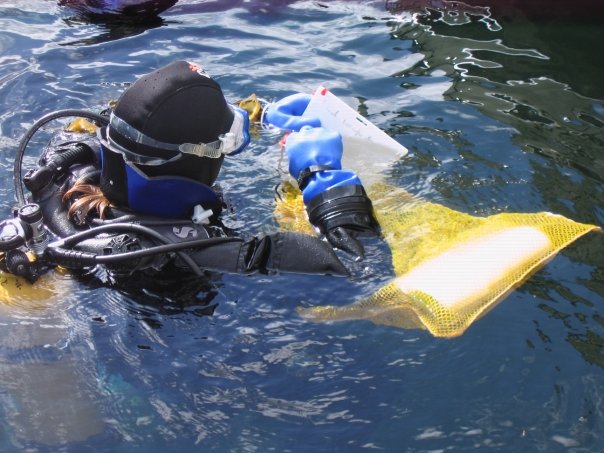 |
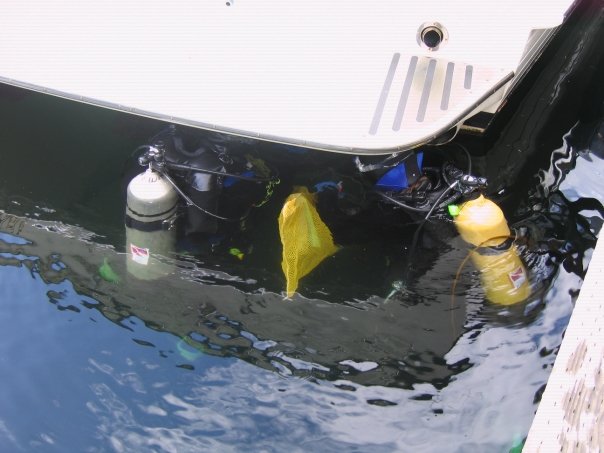 |
|
In this sequence Ian Davidson photographs the hull while Gail Ashton and Greg Ruiz collect samples. Gail then records data on a white board. Photos by Monaca Noble
|
||
The surveys of 50 boat hulls found no detectable fouling on 19 boats. This is not typical of transient boats on the west coast and an encouraging sign for Alaska that such a high proportion of sampled vessels appeared free of biofouling. Many of the remaining boats had fewer than 10 organisms, but eight boats had more than 1,000 organisms and three vessels had more than 10,000 organisms on submerged surfaces. These results seem to match the hull maintenance practices reported above and it’s logical to assume that when people take the time to clean and or paint their boats, that the level of fouling will be greatly reduced. However, species colonization of boats and the effect of voyage patterns and maintenance practices are somewhat complex and the challenge remains to match levels of risk for species introductions to timing and effort of vessel maintenance.
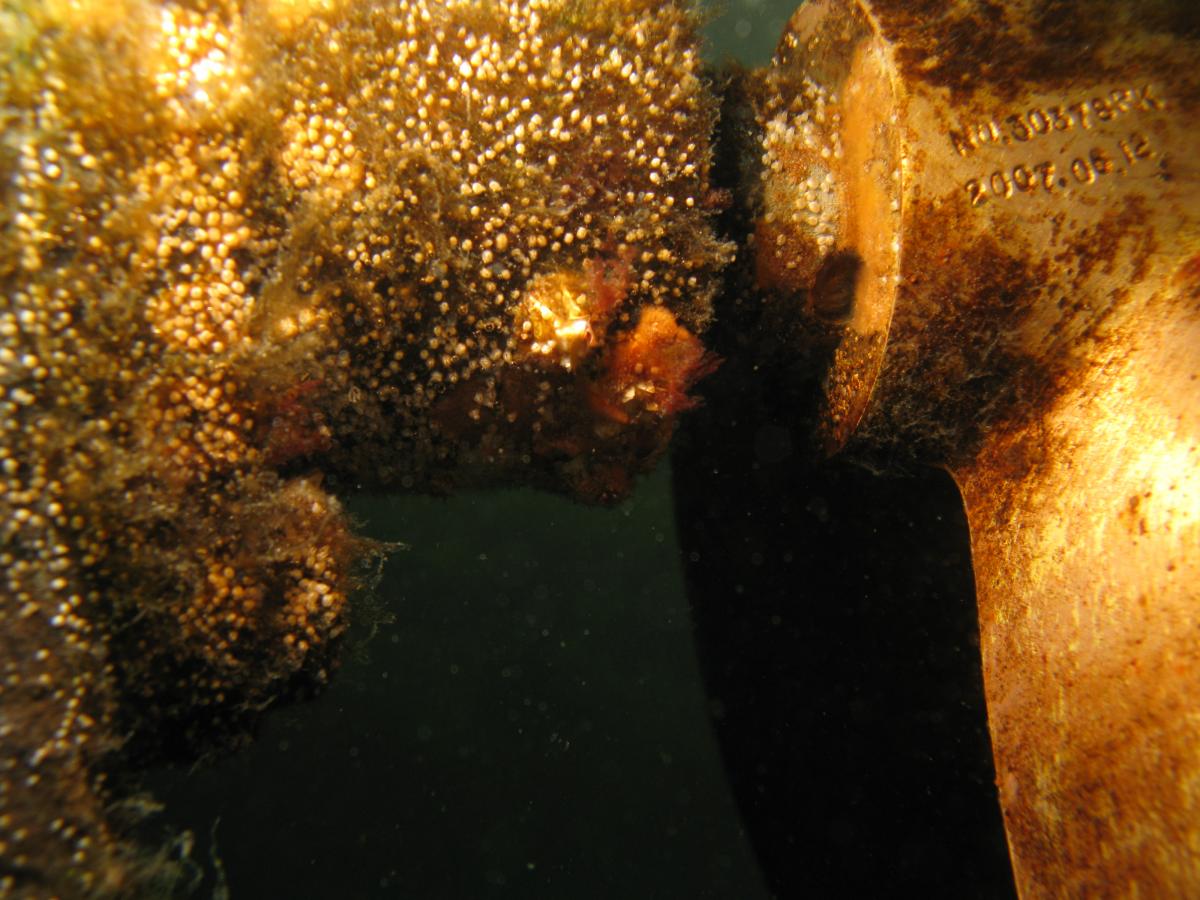
For boats that never leave the dock, the layer of fouling is likely to be evenly distributed over the entire wetted surface area. But for boats in frequent use, the layer of fouling is likely restricted to areas of the hull that are protected from shear stress. Indeed, that’s exactly what the divers found on these boats. The propeller shafts and the keel were frequently fouled, while the bow and bow thrusters were rarely fouled. This likely explains why the only significant correlation between maintenance and fouling was for the aft end of the boat where fouling was more common. Barnacles, bryozoans and hydroids were the most prevalent fouling organisms, but mobile species that were not physically attached to the hull were commonly found living in fouled patches. These included amphipods, isopods, and worms. Only occasionally were soft bodied species such as tunicates, anemones, and sponges found. When species were identified, they found that more than half were native to Ketchikan, although these individuals likely attached to the hull in southern ports and were transported north. Four species were found that have previously been introduced to Ketchikan, including two tunicates (Botrylloides violaceus, Botryllus schlosseri), the Japanese skeleton shrimp (Caprella mutica) and a bryozoan (Schizoporella japonica). Another six species were found have that have not been reported in Alaska. Of these six new comers, four are known to be introduced to the West Coast, including the bryozoans Bugula stolonifera, Watersipora subtorquata, tunicate Diplosoma listerianum, and the bay barnacle Amphibalanus improvisus. More information on each of these species can be found in the online database NEMESIS. We are on the look-out for these yet-to-be established invaders that have been recorded as entering the state on boat hulls through our surveys in Alaska, including the volunteer survey Plate Watch.
In conclusion, the recreational boats arriving to Alaska from the south are carrying with them a diverse assemblage of fouling organisms. But the amount of fouling attached to any given boat is highly variable and in most cases very low (less than 10 organisms). Most of the long distance boaters seem to take care to clean or paint their hulls prior to their voyage. But there were cases in which boats were carrying a huge number of organisms including species that either have been or could become established in Alaska. So the message to boat owners is, “protect Alaska from invasive species, clean your hull before your journey”.
Citation: Ashton, Gail V., Davidson, Ian C., and Ruiz Gregory M. 2014. Transient small boats as a long-distance coastal vector for dispersal of biofouling organisms. Estuaries and Coasts, DOI: 10.1007/s12237-014-9782-9.



